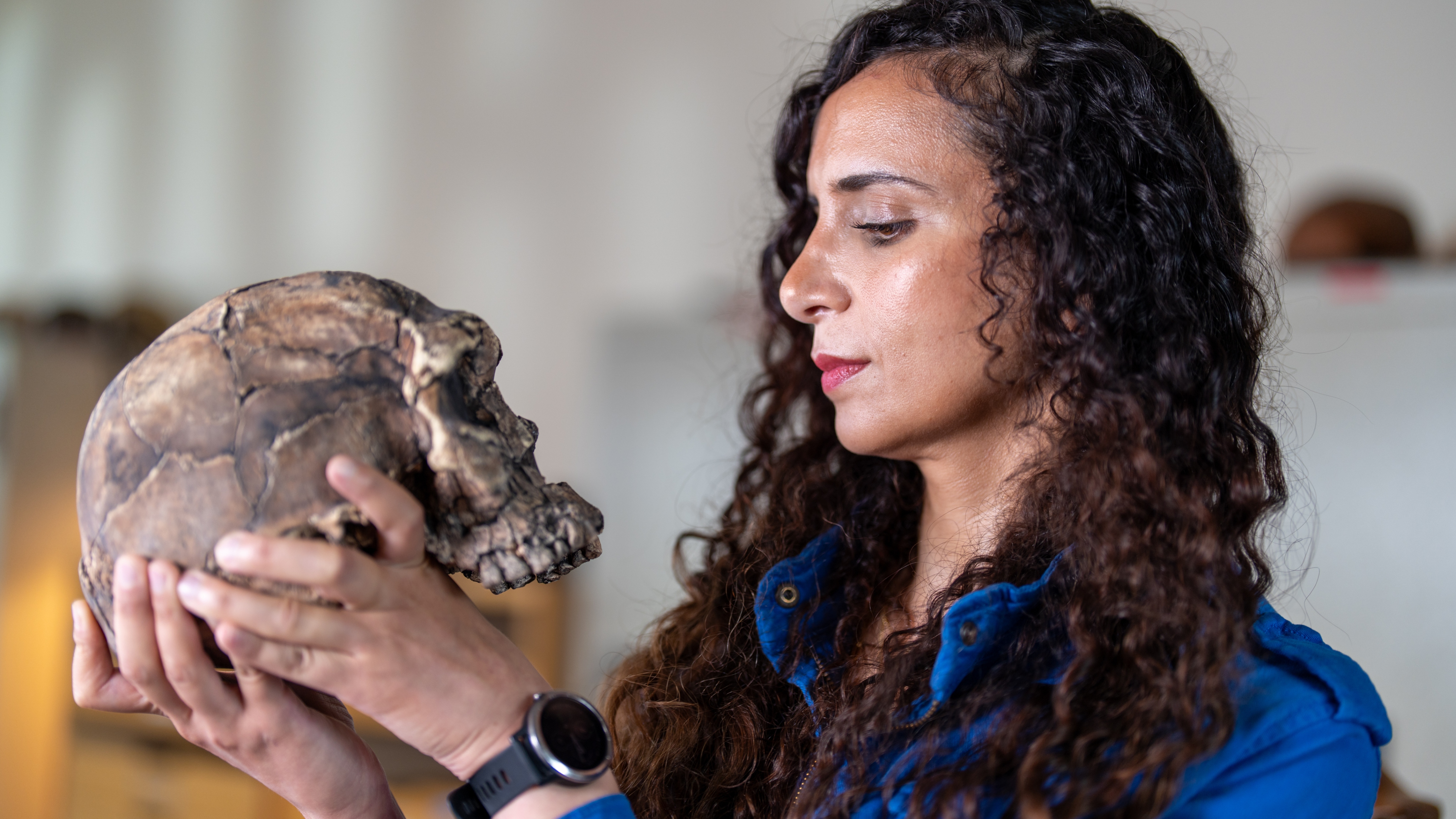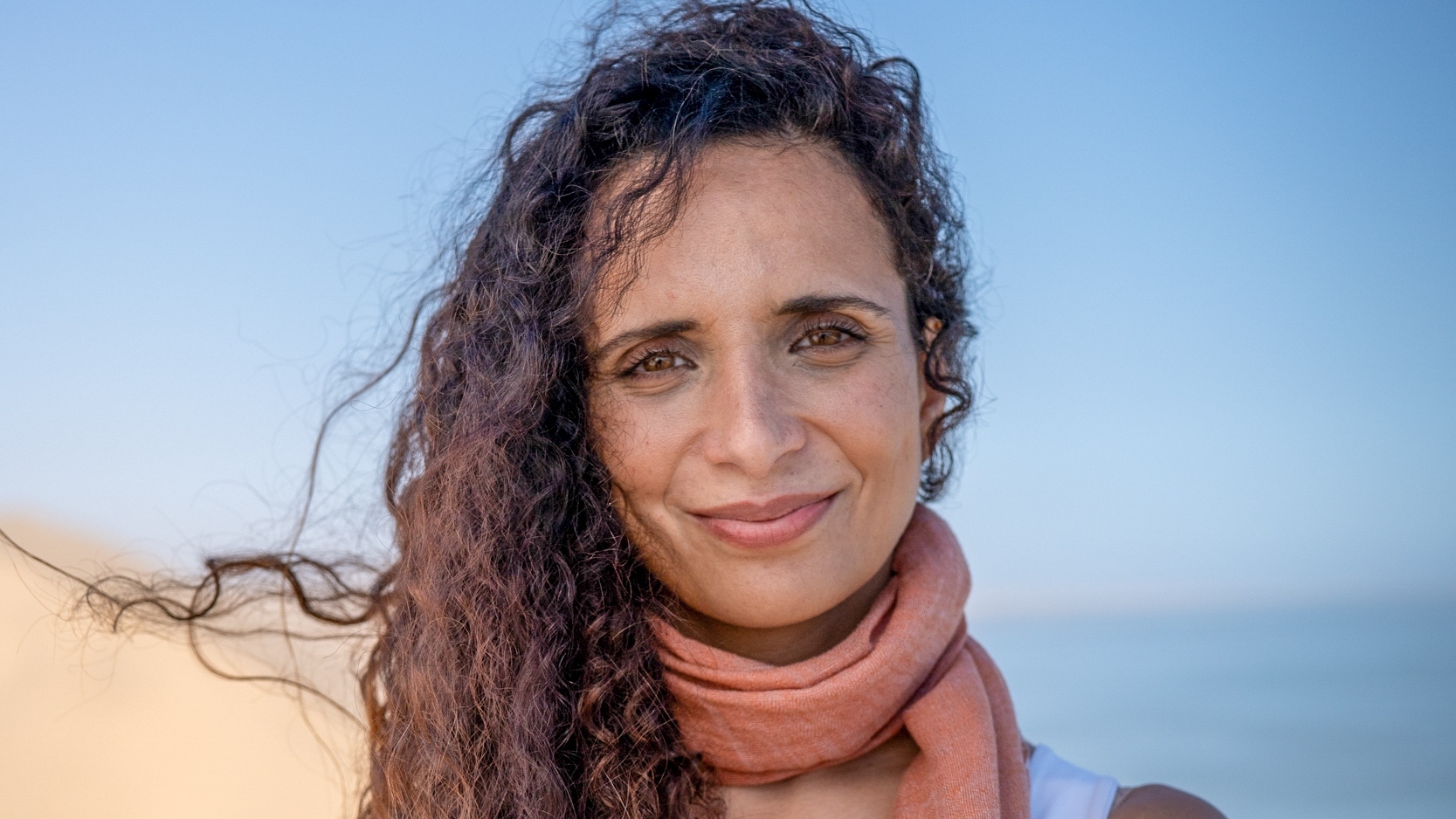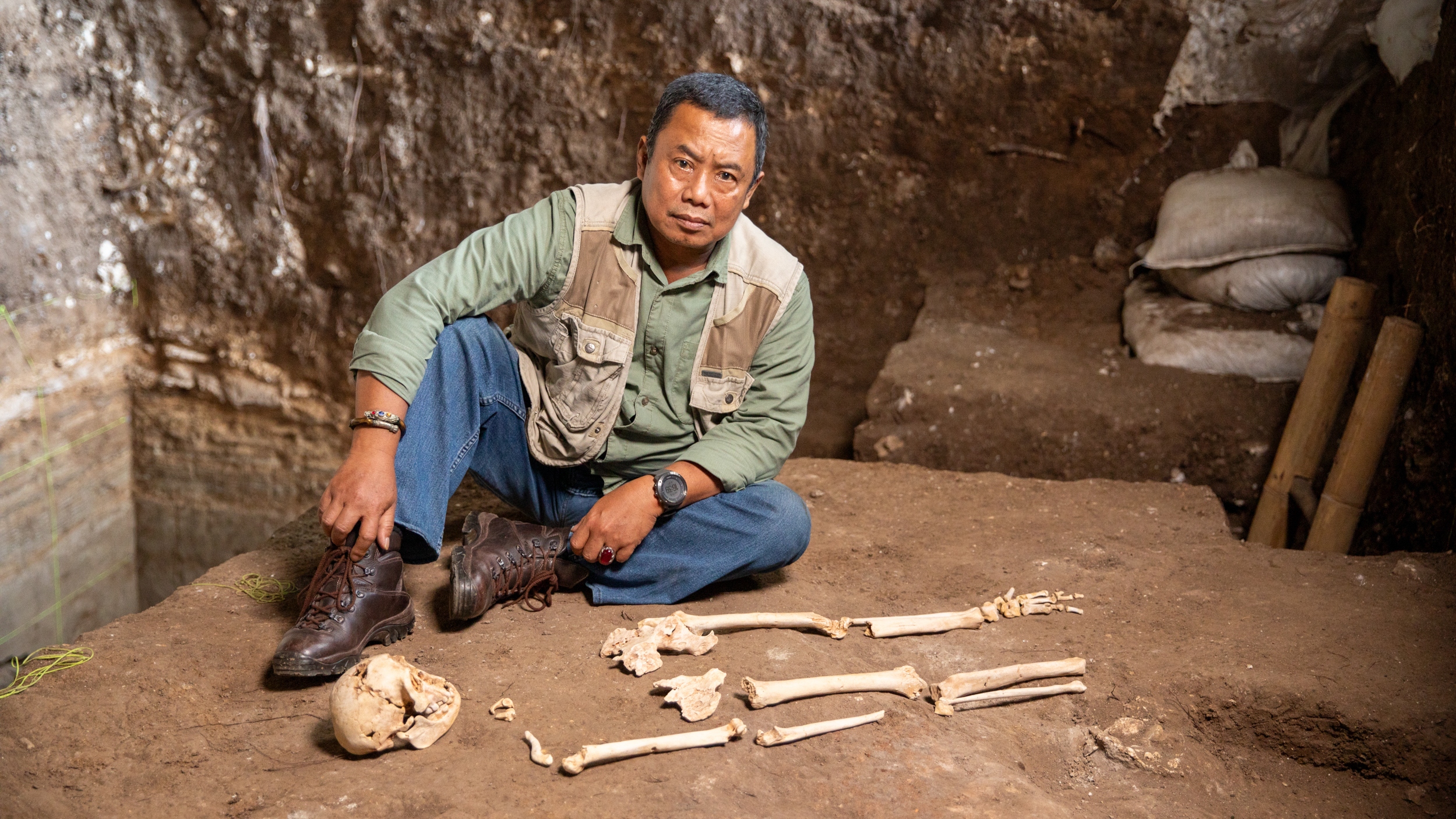Human tells the remarkable tale of how homo sapiens became the dominant species on Earth.
Presented by paleoanthropologist Ella Al-Shamahi, the five-part series explores how we evolved over hundreds of thousands of years and managed to survive against the odds, while several other human species who were living alongside us died out.
Here’s everything you need to know about Human, including an interview with Ella Al-Shamahi…
Human – release date
Human begins in the UK on Monday, July 14 at 9pm on BBC2 and will air weekly, but the whole series will also be available as a box-set from the same day on BBC iPlayer.
It is set to air from Wednesday, September 17 on PBS in the US.
Human – who is Ella Al-Shamahi?
The paleoanthropologist and explorer has previously hosted BBC2’s Neanderthals – Meet Your Ancestors in 2018, in 2020 she hosted Channel 4’s Jungle Mystery: Lost Kingdoms of the Amazon and teamed up with Chris Packham for BBC2’s Waterhole, which looked at wildlife at a reserve in Tanzania. In 2022 she presented Channel 4’s Tutankhamun: Secrets of the Tomb and she has also featured on BBC2’s Our Changing Planet.
Human – what is it about?
The documentary sees Ella Al-Shamahi travel across the globe to a range of archaeological sites where she unveils cutting-edge DNA and fossil discoveries that shed fresh light on our evolution. She also looks at other human species – some of whom lived at the same time as us – and examines why they became extinct but we managed to survive. Meanwhile 3D models, partly created using CGI, reveal what our early ancestors may have looked like and dramatic reconstruction portrays how they may have lived.

Human – episode guide
Episode One: The First Of Us
Ella Al-Shamahi travels to Morocco to look at a fossilised skull from 300,000 years that reveals how homo sapiens is 100,000 years older than previously thought. She also looks at how our adaptability, passing on of knowledge and talent for abstract thinking allowed us to make weapons and withstand crises such as climate change. And in a cave in Botswana, she examines a stone carving that hints at how early humans carried out rituals.
Episode Two: Into the Unknown
This episode reveals how homo sapiens migrated from their original home in Africa around 60,000 years ago to settle in the Middle East and beyond. Ella travels to the Sri Lanka rainforest to see how we lived in the harsh jungle and even hunted monkeys. On the island of Flores in Indonesia, she uncovers more about a tiny human species, homo floresiensis, dubbed the ‘Hobbit’. And she also looks at how we became the first humans to travel across the ocean to Australia 45,000 years ago.
Episode Three: Last Humans Standing
Ella looks at how Neanderthals, our closest relatives, had lived in Europe for nearly 400,000 years, when homo sapiens arrived there almost 55,000 years ago and she unveils how Neanderthals had developed to withstand the cold and how we interbred with them. But by 30,000 years ago, we were the only human species left – did we play a role in Neanderthals’ decline? She also travels to a cave in Spain to see a chilling site where a Neanderthal family was murdered.
Episode Four: Discovering the Americas
Humans first migrated to the Americas during the Ice Age, when it was the last habitable continent. Ella looks at how we hunted giant bears, mammoths and sloths but as the climate shifted, these animals faced extinction so we turned to farming. She also examines fossilised footprints, possibly of a mother and her child, who could have been some of the first settlers in North America.
Episode Five: A Great Gamble
In the final instalment, Ella examines how, around 12,000 years ago, as the Ice Age drew to a close, humans started to make permanent settlements. In Turkey she visits the world’s oldest temple Gobekli Tepe, and an early town, Çatalhöyük, but cramped urban living brought disease and unrest. But in Egypt Ella finds out how cities thrived. And in a turquoise mine in the Sinai desert, she examines how migrant workers created the first alphabet.
Human trailer
The new trailer gives an extraordinary insight into what we can expect from this fascinating documentary…

Human – interview with Ella Al-Shamahi
What was the thinking behind the series?
“So many new human species have been discovered and our family tree’s got bigger, so we want to tell our story. To understand who we are today, we must understand where we come from. Many species were around at the same time. We portray ourselves as the pinnacle of human evolution, but we were the underdog and had competition. Yet, somehow, we’re the only ones left. How did we do that?”

Tell us about an earlier species you learnt about, homo floresiensis, dubbed the ‘hobbit’…
“We wanted to show this fantastical Lord of the Rings-like world, except it was real. They would have come up to my hip and they only lived on this island, Flores, in Indonesia with giant rats, komodo dragons, huge storks and miniature elephant-like mammals!”

And what did you discover about Neanderthals?
“Neanderthals are our cousins that never made it, they’ve been portrayed as these knuckle-dragging ape men but they were upright and capable of impressive things. Most people have around 2% Neanderthal in their DNA, so our ancestors must have interbred with them. These species aren’t with us now, but their legacy is.”
Did anything move you about these early humans’ lives?
“Yes, with the mother and child’s fossilised footprints in New Mexico, you can see when she picks up the child and sometimes she puts it on her right hip, sometimes on her left. That’s so natural and it’s been locked in time.”
Finally, what has been the key to our survival?
“Our ability to co-operate in a way that no other species does. And It’s cumulative culture – our ancestors have perfected, tinkered and copied. If our ancestors hadn’t been that creative, inventive and lucky, we wouldn’t be here.”
